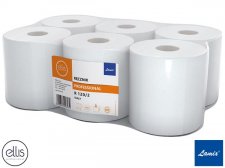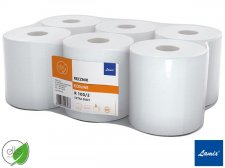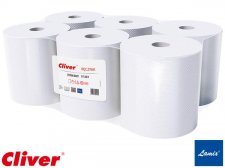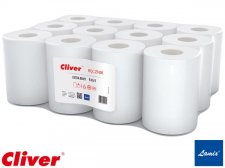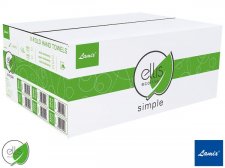Nowa cena netto
PLN
3.62
Cena brutto
PLN
4.45
Cena netto
PLN
3.73
Cena brutto
PLN
4.45
Ilość zamawiana
Ilość została automatycznie zmieniona do wielokrotności najmniejszej jednostki sprzedaży
Pakowanie: (12/120)
Wersje kolorystyczne:
Kod towaru: GOSFLOW N S
EAN: 5907522900557
+ VAT: 23%
Jednostka miary: para
Nowa cena netto
PLN
14.94
Cena brutto
PLN
18.38
Cena netto
PLN
15.39
Cena brutto
PLN
18.38
Ilość zamawiana
Ilość została automatycznie zmieniona do wielokrotności najmniejszej jednostki sprzedaży
Pakowanie: (6/6)
Wersje kolorystyczne:
Kod towaru: HLA-RECEL-120 W
EAN: 5900848003032
+ VAT: 23%
Jednostka miary: szt.
Nowa cena netto
PLN
102.85
Cena brutto
PLN
126.51
Cena netto
PLN
105.94
Cena brutto
PLN
126.51
Ilość zamawiana
Ilość została automatycznie zmieniona do wielokrotności najmniejszej jednostki sprzedaży
Pakowanie: (0/1)
Wersje kolorystyczne:
Kod towaru: HLA-RECELV-150 W
EAN: 5900848002585
+ VAT: 23%
Jednostka miary: Karton
Nowa cena netto
PLN
9.44
Cena brutto
PLN
11.61
Cena netto
PLN
12.01
Cena brutto
PLN
11.61
Ilość zamawiana
Ilość została automatycznie zmieniona do wielokrotności najmniejszej jednostki sprzedaży
Pakowanie: (6/6)
Wersje kolorystyczne:
Kod towaru: HLA-REMAK-100 W
EAN: 5900848003063
+ VAT: 23%
Jednostka miary: szt.
Nowa cena netto
PLN
10.21
Cena brutto
PLN
12.56
Cena netto
PLN
10.51
Cena brutto
PLN
12.56
Ilość zamawiana
Ilość została automatycznie zmieniona do wielokrotności najmniejszej jednostki sprzedaży
Pakowanie: (6/6)
Wersje kolorystyczne:
Kod towaru: HLA-REMAK-130 W
EAN: 5900848005944
+ VAT: 23%
Jednostka miary: szt.
Nowa cena netto
PLN
5.60
Cena brutto
PLN
6.89
Cena netto
PLN
5.77
Cena brutto
PLN
6.89
Ilość zamawiana
Ilość została automatycznie zmieniona do wielokrotności najmniejszej jednostki sprzedaży
Pakowanie: (12/12)
Wersje kolorystyczne:
Kod towaru: HLA-REMAK-65 W
EAN: 5900848005951
+ VAT: 23%
Jednostka miary: szt.
Nowa cena netto
PLN
95.33
Cena brutto
PLN
117.26
Cena netto
PLN
98.19
Cena brutto
PLN
117.26
Ilość zamawiana
Ilość została automatycznie zmieniona do wielokrotności najmniejszej jednostki sprzedaży
Pakowanie: (0/1)
Wersje kolorystyczne:
Kod towaru: HLA-REMAKV-150 W
EAN: 5900848002899
+ VAT: 23%
Jednostka miary: Karton
Nowa cena netto
PLN
56.88
Cena brutto
PLN
69.96
Cena netto
PLN
58.59
Cena brutto
PLN
69.96
Ilość zamawiana
Ilość została automatycznie zmieniona do wielokrotności najmniejszej jednostki sprzedaży
Pakowanie: (0/1)
Wersje kolorystyczne:
Kod towaru: HLA-REMAKV-200 Z
EAN: 5900848002240
+ VAT: 23%
Jednostka miary: Karton
Nowa cena netto
PLN
17.96
Cena brutto
PLN
22.09
Cena netto
PLN
18.50
Cena brutto
PLN
22.09
Ilość zamawiana
Ilość została automatycznie zmieniona do wielokrotności najmniejszej jednostki sprzedaży
Pakowanie: (1/50)
Wersje kolorystyczne:
Kod towaru: KOKAM MO M
EAN: 5907522960445
+ VAT: 23%
Jednostka miary: szt.
W CIĄGU NAJBLIŻSZYCH 3 MIESIĘCY NIE JEST PLANOWANA DOSTAWA TEGO TOWARU.
POLECAMY
PROMOCJA
Nowa cena netto
PLN
6.62
Cena brutto
PLN
8.14
Cena netto
PLN
7.80
Cena brutto
PLN
8.14
Ilość zamawiana
Ilość została automatycznie zmieniona do wielokrotności najmniejszej jednostki sprzedaży
Pakowanie: (1/50)
Wersje kolorystyczne:
Kod towaru: KOM B M
EAN: 5907522960698
+ VAT: 23%
Jednostka miary: szt.
CHWILOWY BRAK PRODUKTU
POLECAMY
PROMOCJA
Nowa cena netto
PLN
6.62
Cena brutto
PLN
8.14
Cena netto
PLN
7.80
Cena brutto
PLN
8.14
Ilość zamawiana
Ilość została automatycznie zmieniona do wielokrotności najmniejszej jednostki sprzedaży
Pakowanie: (1/50)
Wersje kolorystyczne:
Kod towaru: KOM C M
EAN: 5907522960650
+ VAT: 23%
Jednostka miary: szt.
W CIĄGU NAJBLIŻSZYCH 3 MIESIĘCY NIE JEST PLANOWANA DOSTAWA TEGO TOWARU.
POLECAMY
PROMOCJA
Nowa cena netto
PLN
6.62
Cena brutto
PLN
8.14
Cena netto
PLN
7.80
Cena brutto
PLN
8.14
Ilość zamawiana
Ilość została automatycznie zmieniona do wielokrotności najmniejszej jednostki sprzedaży
Pakowanie: (1/50)
Wersje kolorystyczne:
Kod towaru: KOM G M
EAN: 5907522912338
+ VAT: 23%
Jednostka miary: szt.
Trwa doczytywanie produktów.





































